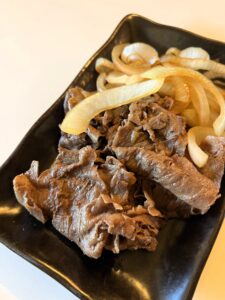Last Updated on January 13, 2025 by Karen
This Easy Bistek Tagalog recipe highlights the rich flavors of Filipino cuisine, featuring tender marinated beef infused with a savory and tangy marinade of calamansi juice, soy sauce, and garlic. Served with steamed rice, it’s a comforting and satisfying dish that will impress family and friends.
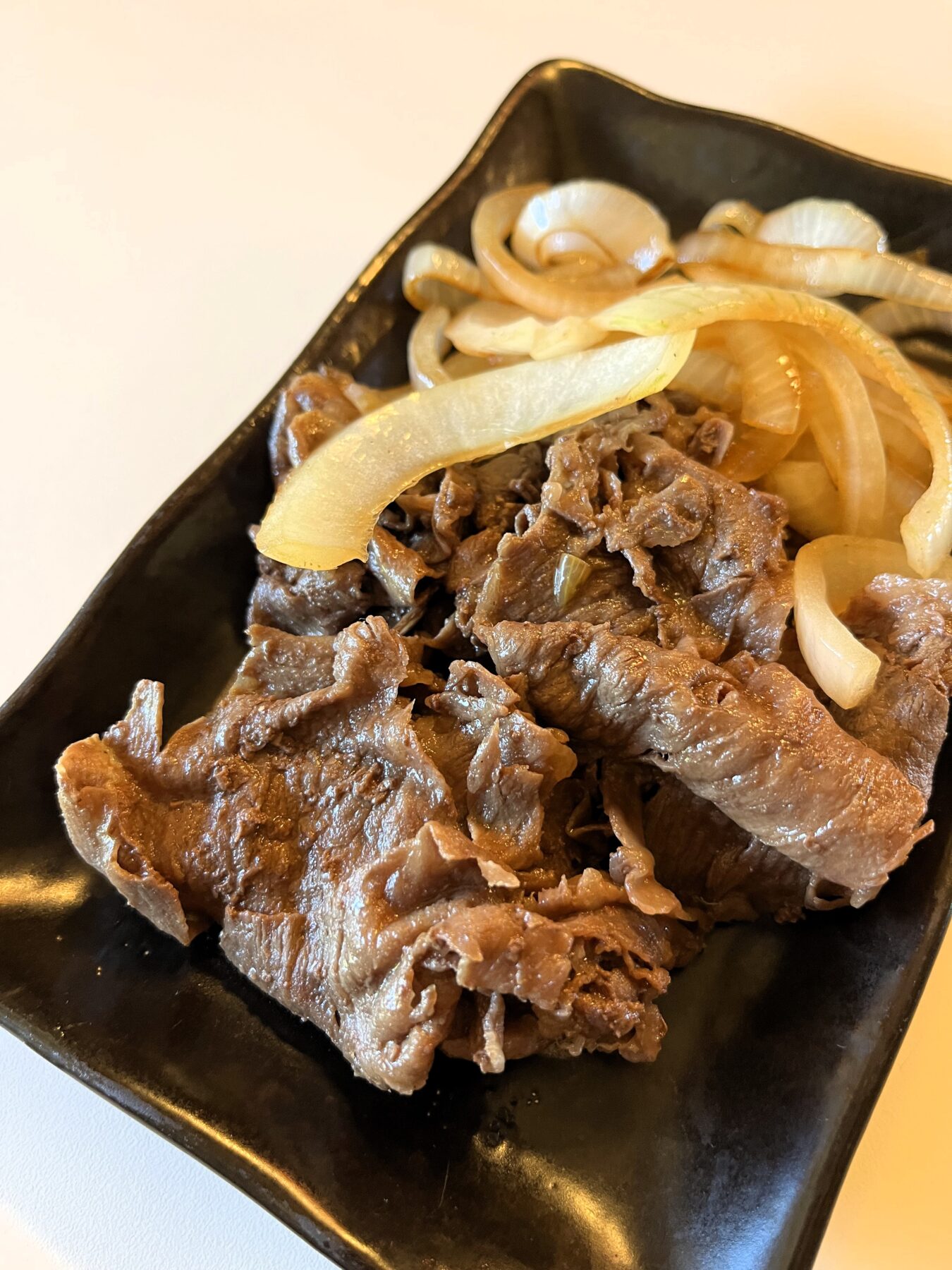
Bistek Tagalog, also known as Filipino beefsteak or Filipino bistek, holds a special place in the hearts and kitchens of many Filipinos. This beloved dish showcases the essence of Filipino cuisine with its rich flavors, aromatic ingredients, and comforting simplicity. Whether served on special occasions or during everyday meals, Bistek Tagalog is one of the favorite dishes that brings families together, fostering a sense of warmth and nostalgia.
At its core, Bistek Tagalog features tender beef marinated in a flavorful mixture of soy sauce, calamansi juice, and garlic. The marinade is what makes this dish truly exceptional, as it infuses the meat with savory and tangy notes that balance beautifully together.
The preparation of Bistek Tagalog is straightforward, making it accessible even for those who are cooking for the first time. With just a few essential ingredients and simple steps, anyone can enjoy the authentic flavors of Filipino cuisine without spending hours in the kitchen. It’s a great way to introduce your family and friends to the rich culinary heritage of the Philippines, showcasing how vibrant and diverse Filipino food can be.
What sets Bistek Tagalog apart is not just its taste, but also its versatility. This dish can be served with various sides, making it adaptable to different occasions. The classic pairing with steamed white rice allows the savory sauce to soak in, creating a fulfilling meal. Additionally, the generous amount of fresh onions sauteed to sweetness adds a beautiful texture and flavor, enhancing the overall experience of the dish.
What is Bistek Tagalog?
Bistek Tagalog, or Filipino beef steak, is a classic Filipino dish that features tender, thin slices of beef marinated in a savory soy sauce mixture. It’s often made with calamansi juice, giving it a unique tangy flavor that perfectly complements the beef. This dish is not only delicious but also a great representation of Filipino cuisine.
Taste
The taste of Bistek Tagalog is a harmonious blend of savory soy sauce, citrus from the fresh calamansi or lemon juice, and the aromatic essence of garlic and black pepper. It’s a flavor-packed dish that’s sure to become one of your favorite Filipino dishes.
Texture
With thinly-sliced beef, the texture is incredibly tender, especially when using cuts like flank steak or top sirloin. The lots of onions in this dish add a nice sweetness that enhances the overall flavor profile.
Time
The cooking time for this recipe is around 30 minutes, making it perfect for busy days when you want a delicious meal in less time.
Ease
This classic Bistek Tagalog recipe is straightforward and perfect for first-time cooks. With a few simple steps and minimal ingredients, you can create a dish that tastes like it’s straight out of a Filipino restaurant!
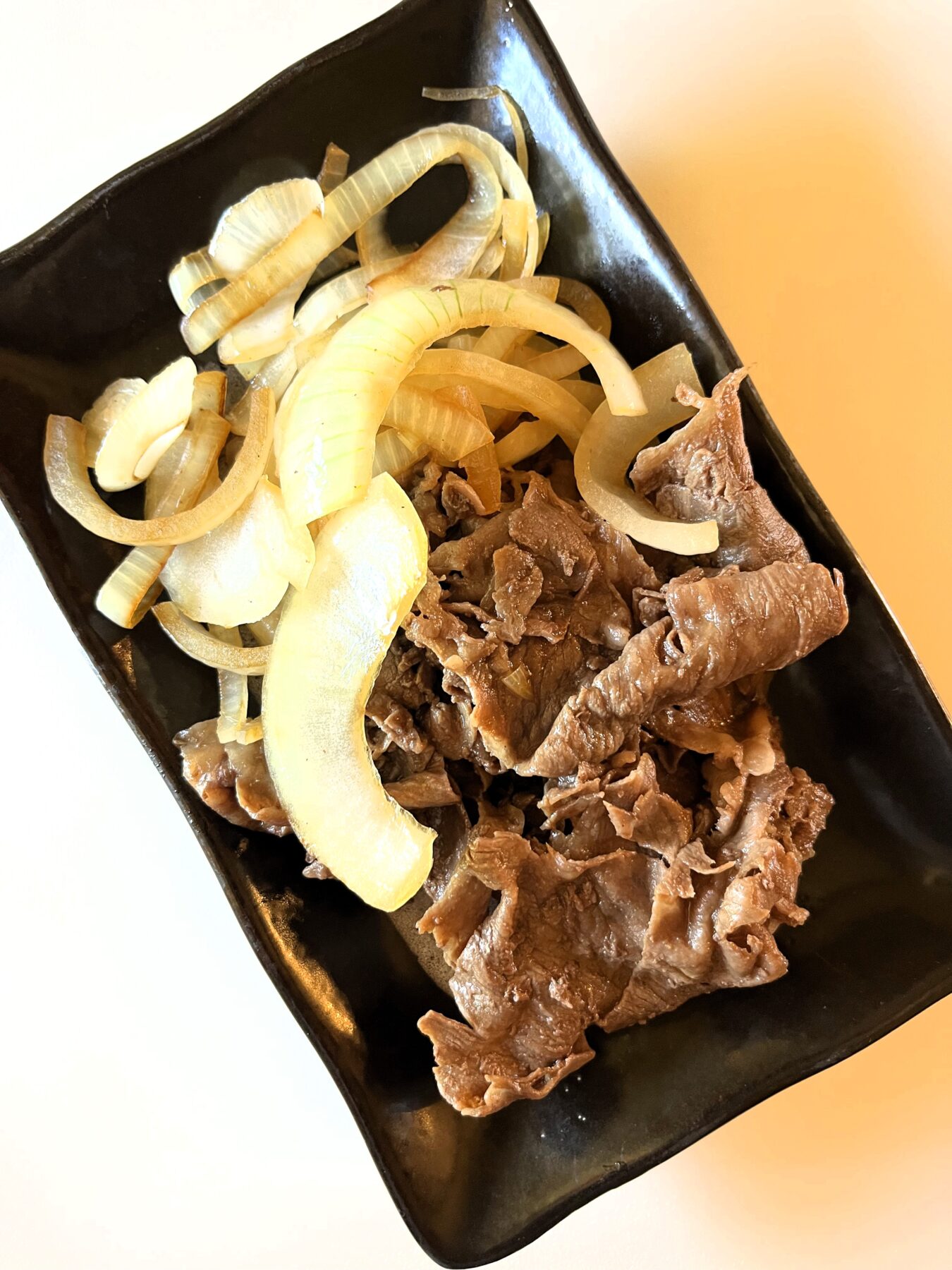
What Ingredients Do You Need to Make This Bistek Tagalog?
The ingredients for this recipe are really simple. Here’s what you’ll need:
Beef (flank steak or sirloin steak): Thinly sliced for tenderness. I like to buy the hot pot/shabu shabu style beef slices (can be found in Asian markets) to make this dish. You can also find thinly sliced beef in regular grocery stores. Use a meat mallet to tenderize tough cuts if necessary.
Soy sauce: A savory base for the marinade.
Calamansi juice: Freshly squeezed or substitute with lemon or lime juice for a similar flavor.
Garlic: Adds depth to the marinade.
Onions: A generous amount, cut into rings or thin slices for sweetness. You can use yellow onion, red onion, or white onions.
Black pepper: For a touch of spice.
Cooking oil (vegetable oil, canola oil, or any neutral oil): Vegetable oil is best for frying the beef due to the high smoking point. Avocado oil is also great for stir-frying.
Water or beef broth: To adjust the marinade as needed.
Leftover marinade: Used to enhance the dish during cooking.
Once you have all your ingredients chopped and prepped, cooking this Bistek Tagalog is straightforward and takes minutes.
1. Marinate the Beef: In a large bowl, combine soy sauce, calamansi juice (or lemon juice), minced garlic, and black pepper. Add the thin slices of beef and let it marinate for at least 15 minutes. Reserve the marinade for later.
2. Prepare the Onions: In a large skillet, heat a tablespoon of oil over medium-high heat. Sauté the onion rings until they become soft and translucent. Remove and set aside.
3. Cook the Beef: In the same skillet, add a bit more oil if necessary and fry the marinated beef on medium-high heat. Use a slotted spoon to remove the beef once cooked through, about 3-5 minutes. Add the reserved marinade and a cup of water to the skillet, bringing it to a simmer.
4. Combine: Return the beef to the skillet along with the sautéed onions. Stir to combine and let simmer for another 2-3 minutes to infuse flavors.
5. Serve: Transfer to a serving plate and enjoy your Bistek Tagalog with white rice.
Scroll to the bottom of the post to get the full printable recipe card with measurements and instructions.
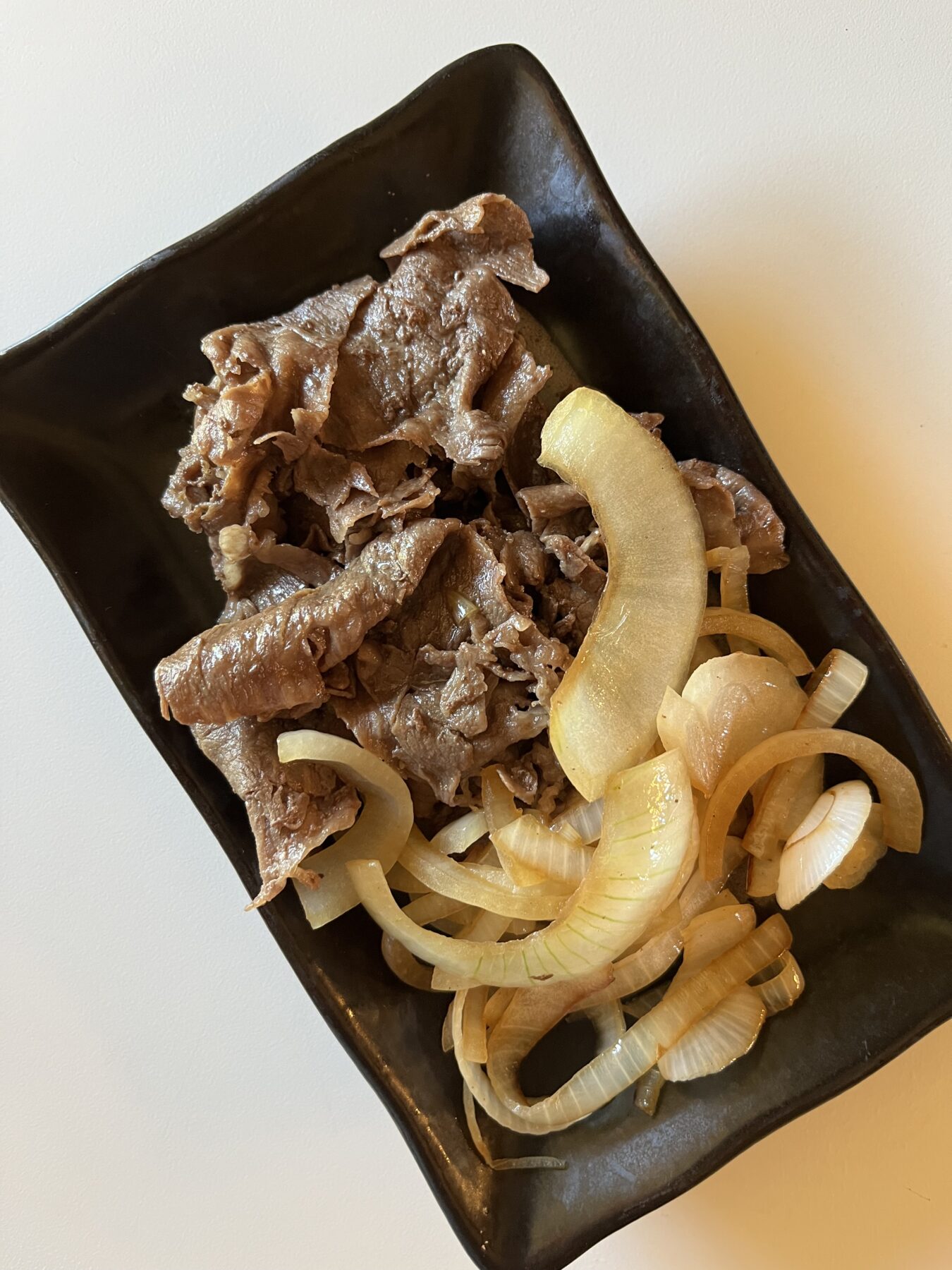
What is calamansi? Can I substitute calamansi juice with something else?
Calamansi, often referred to as “calamondin,” is a small citrus fruit native to the Philippines and other Southeast Asian countries. It has a unique flavor that is both tart and slightly sweet, resembling a cross between a lime and an orange. Calamansi is commonly used in Filipino cooking, particularly in marinades, dipping sauces, and beverages. Its bright, tangy taste adds a refreshing zing to dishes like this bistek recipe.
If you can’t find fresh calamansi, there are several suitable substitutes:
Lime juice: The closest substitute, lime juice offers a similar tartness. You can use it in equal amounts as a replacement.
Meyer lemon juice: Slightly sweeter than regular lemons, Meyer lemons provide a nice balance of acidity. Use the juice in equal measure.
Regular lemon juice: While more acidic than calamansi, it can work in a pinch. You may want to adjust the amount slightly to avoid overpowering the dish.
Vinegar: In some cases, a splash of vinegar (like rice vinegar or apple cider vinegar) can mimic the tangy profile, though it lacks the sweetness of calamansi. You can add a little bit of coconut palm sugar or brown sugar to balance the acidity.
Using any of these substitutes will still yield a delicious dish, so feel free to choose what works best for you!
How do I know if Bistek Tagalog is cooked through?
As with all stir fry dishes, the beef should be browned and no longer pink in the center. For added assurance, you can use a meat thermometer; the internal temperature should reach 145°F (63°C).
What are some ways to serve this Bistek Tagalog?
If you’re wondering what to serve with beef steak tagalog, here are a few options that go well with this particular dish:
Steamed white rice: Perfect for soaking up the savory sauce.
Fried eggs: A traditional touch.
Sauteed vegetables: Like green beans or carrots for a healthy balance.
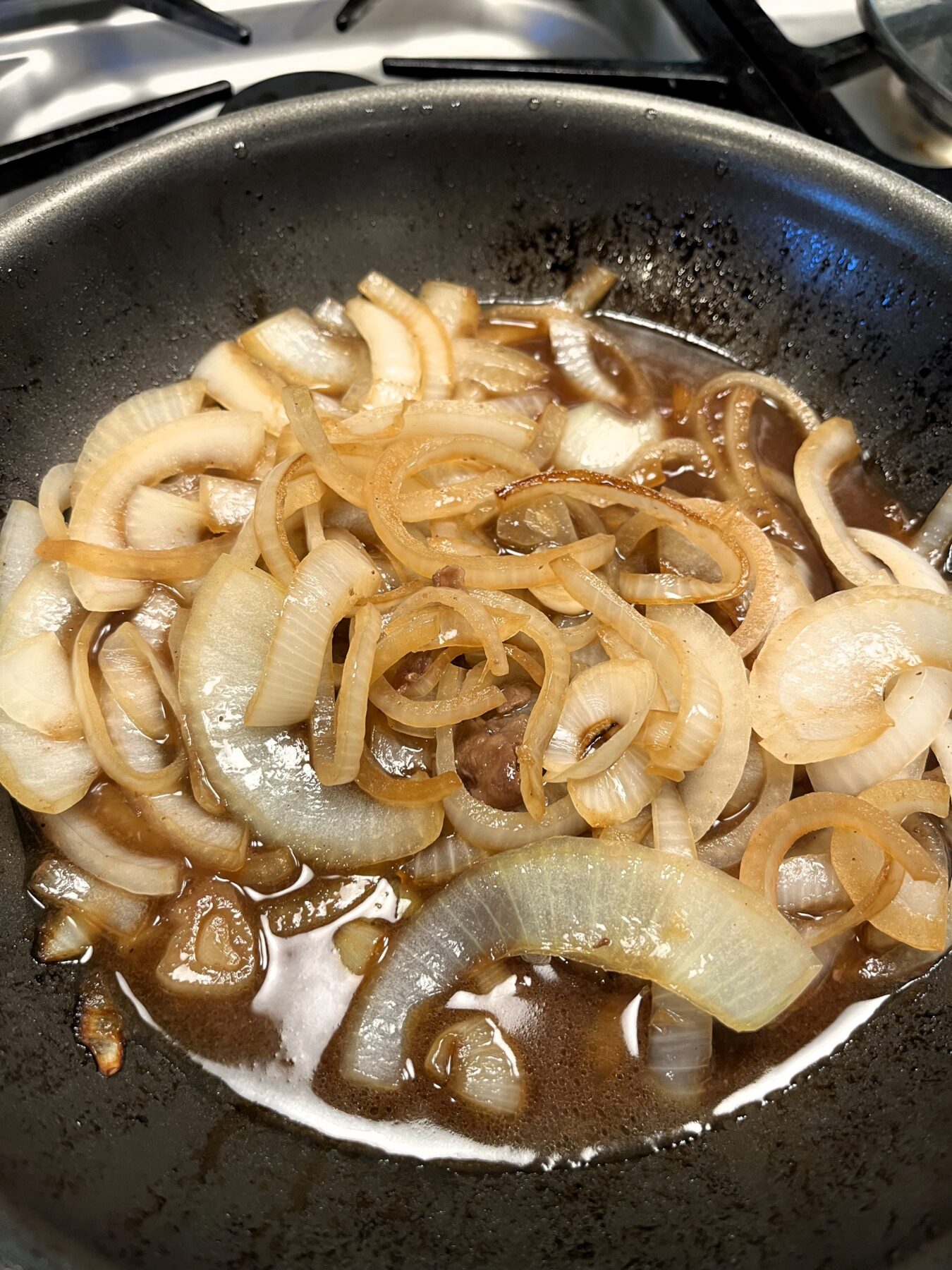
Here are some ways you can change up this recipe
- Consider including bell peppers or mushrooms for extra nutrition.
- Use chicken or pork if you prefer another protein.
- You can also use coconut aminos for a gluten-free alternative to soy sauce
- For a healthier version, opt for lean cuts of beef and low-sodium soy sauce.
How Should Bistek Tagalog Be Stored?
Store any leftovers in an airtight container in the refrigerator for up to 3 days. Make sure to separate the beef from the sauce to maintain texture.
Can You Freeze Bistek Tagalog?
Yes, you can freeze Bistek Tagalog! Allow it to cool completely, then transfer it to a freezer-safe container. It can be frozen for up to 3 months.
Can Bistek Tagalog Be Made Ahead?
Absolutely! You can marinate the beef ahead of time and store it in the fridge until you’re ready to cook. You can refrigerate marinated beef for up to 24 hours for the best flavor and tenderness. If you need to marinate it longer, it’s best to keep it within 2 to 3 days, but be aware that the texture might begin to change as the meat continues to absorb the marinade.
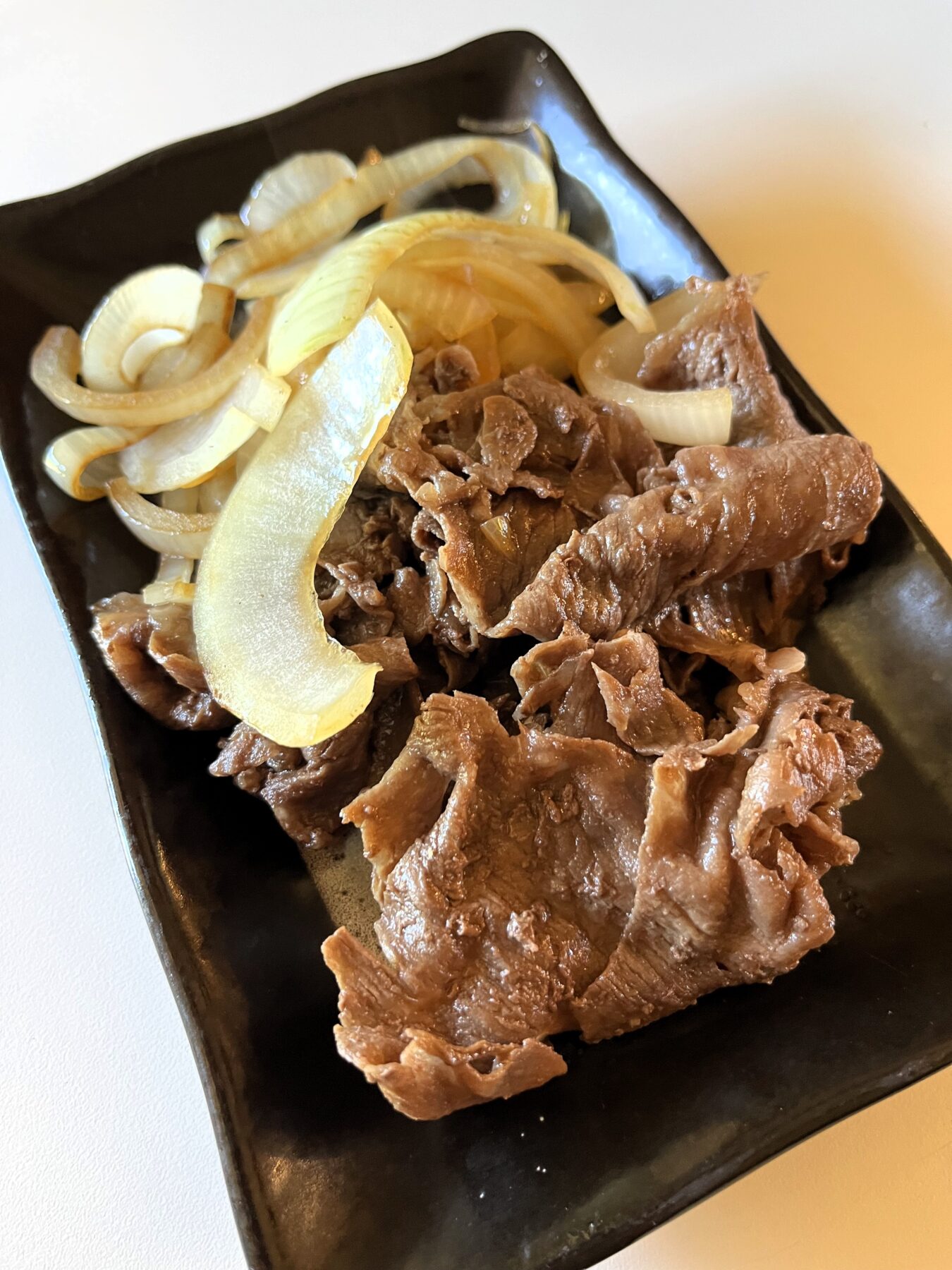
Can this dish be made healthier?
Yes! Lean cuts of beef or a low-sodium soy sauce can be used to create a healthier version without sacrificing flavor.
Can you make this with pork? What is the pork bistek recipe?
To adapt a traditional Bistek Tagalog recipe for pork bistek recipe, follow these simple changes to the classic beef-based dish:
- Choose the Right Pork Cut: Substitute the beef with pork. Pork shoulder, pork belly, or pork loin are great options for this dish. Thinly slice the pork to mimic the texture of traditional bistek tagalog.
- Adjust Cooking Time: Pork bistek typically cooks faster than beef, so keep an eye on the simmering time to avoid overcooking.
- Marinate as Usual: Use the same marinade of soy sauce, calamansi (or lemon) juice, and garlic. Pork absorbs marinades well, enhancing the tangy and savory flavors of pork bistek.
- Cooking Process: Sear the pork slices in hot oil until lightly browned before simmering them in the marinade. This ensures tender, flavorful meat.
- Tweak the Sauce: Pork bistek tends to release more natural juices during cooking, so you may want to reduce the water or broth in the sauce slightly to keep it rich and flavorful.
- Optional Fat Rendering: If using pork belly, allow the fat to render slightly during searing. This adds depth to the dish and complements the savory-sour profile of the sauce.
- Complete with Onions: Don’t forget to top the dish with caramelized onion rings for the authentic pork bistek look and taste.
By making these adjustments, you’ll have a delicious Pork Bistek that’s just as hearty and flavorful as the classic Bistek Tagalog!
If You Like This Bistek Tagalog, You May Like:
Bistec Encebollado: A similar onion dish with a distinct flavor profile.
Chicken Adobo: Another popular Filipino dish that’s easy to make.
Sinigang na Baboy (Pork Sinigang): A deliciously tangy soup that pairs well with rice.
If you make this Bistek Tagalog recipe, be sure to leave me a comment and let me know what you think! Enjoy your cooking!
Easy Bistek Tagalog (Filipino Beef Steak) Recipe
Ingredients
- 1 lb beef sirloin thinly sliced
- 3 tbsps soy sauce
- 2 pieces calamansi or 1/2 of a small lemon, juiced
- 2 cloves garlic minced
- 2 medium onions sliced into rings
- vegetable oil for cooking
- 1/2 cup water or broth
- salt and black pepper to taste
Instructions
- In a bowl, combine the beef sirloin, soy sauce, calamansi juice (or lemon juice). Marinate for at least 1 hour, overnight for best results.
- Heat cooking oil in a pan over medium heat. Add half of the sliced onions and pan-fry until they become translucent and soft. Remove the onions from the pan and set aside.
- Drain the marinade from the beef and set it aside. In the same pan, add the beef and pan-fry for about 1 minute per side. Remove from the pan and set aside.
- Add more oil if needed. Sauté the minced garlic and the remaining raw onion rings until the onion softens.
- Pour the reserved marinade and water into the pan. Bring to a boil. Add the beef back into the pan, cover, and simmer until the meat is tender, adding water as needed.
- Season with salt and black pepper to taste. Top with the pan-fried onions. Transfer to a serving plate and serve hot with steamed white rice.

